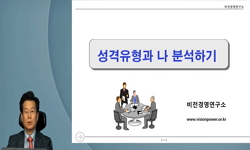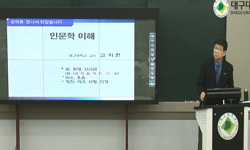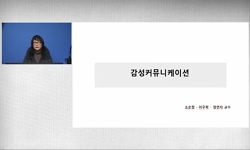목 적 : 눈깜작임은 뇌에서 감각을 조절하는 기능과 관계된 개인의 인지능력과 성격에 따라 달라질 수 있다. 저자들은 이러한 성격이 눈깜작임과 증감뇌유발전위 등과 상호 어떠한 연관이 ...
http://chineseinput.net/에서 pinyin(병음)방식으로 중국어를 변환할 수 있습니다.
변환된 중국어를 복사하여 사용하시면 됩니다.
- 中文 을 입력하시려면 zhongwen을 입력하시고 space를누르시면됩니다.
- 北京 을 입력하시려면 beijing을 입력하시고 space를 누르시면 됩니다.
https://www.riss.kr/link?id=A100664421
- 저자
- 발행기관
- 학술지명
- 권호사항
-
발행연도
1994
-
작성언어
English
- 주제어
-
등재정보
KCI등재
-
자료형태
학술저널
-
수록면
156-162(7쪽)
- 제공처
-
0
상세조회 -
0
다운로드
부가정보
국문 초록 (Abstract)
목 적 : 눈깜작임은 뇌에서 감각을 조절하는 기능과 관계된 개인의 인지능력과 성격에 따라 달라질 수 있다. 저자들은 이러한 성격이 눈깜작임과 증감뇌유발전위 등과 상호 어떠한 연관이 있는지를 연구하려고 하였다. 방법 : 44 명의 정상 대학생에게 증감뇌유발전위, 눈깜작임과 Zuckerman 의 감각추구척도와 Eysenck 성격설문지 동을 조사하여 그 상호관계를 분석하였다. 결 과 : 증감뇌유발전위에서 빛의 강도가 증가할수록 눈깜작임이 증가하였다. 대부분의 성격척도에서 눈깜작임과 유의한 역상관관계를 보였으며 신경증척도만이 정상관관계를 보였다. 눈깜작임과 증감유발전위의 기울기와 가장 강한 정상관관계를 보인 뇌의 부위는 우측 후 측두엽이었다. 결 론 : 감각추구경향이 강할수록 눈을 적게 깜작이었다. 유발전위보다 눈깜작임이 성격과 더 높은 상관관계를 보여 눈깜작임이 더 일차적인 필터 역할을 한다고 생각된다. 그리고 우측 후 측두엽은 여러 뇌 부위 중 시각을 조절하는데 가장 중요한 역할을 하는 것으로 유추된다.
다국어 초록 (Multilingual Abstract)
Objectives: Eyeblinking varied depending on individual cognitive abilities or personality traits thought to related to brain mechanisms of sensory modulation. This study explored whether personality traits are related to the rate of eye blinks and how...
Objectives: Eyeblinking varied depending on individual cognitive abilities or personality traits thought to related to brain mechanisms of sensory modulation. This study explored whether personality traits are related to the rate of eye blinks and how eyeblink and evoked potential augumenting-reducing(EPAR) interact Methods: Forty four students were studied with EPAR topography to explore how eyeblinks, personality and EPAR interact The Zuckerman Sensation Seeking Scale(SSS) and Eysenck Personality Questionnaire(EPQ) were used as personality measured by a stimulus response program during EP study. Results: Rate of blink increased as intensity of light increased. The General(GEN), Thrill and Adventure Seeking(TAS), Experience Seeking(ES) and Disinhibition(DS) subscales in SSS and Extraversion-Introversion(E) subscale in EPQ showed significant negative correlations with number of eyeblinks in the hightest intensity of light, whereas Neuroticism(N) subscales in EPQ showed a positive correlation. Correlation between number of eyeblinks with the brightest light and EPAR slope varied topographically. The strongest positive correlation was noted in right posterior temporal area. Conclusion: High sensation seekers blinked significantly fewer times than lower sensation seeker did. Higher personality correlations with eyeblink than with EP may imply that the eyeblink works as a primary filter since it is more directly related to central mechanisms of sensory modulation than EP. The right posterior temporal area may play an important role in modulation of visual stimuli.
동일학술지(권/호) 다른 논문
-
- 대한수면의학회
- 민양기
- 1994
- KCI등재
-
- 대한수면의학회
- 이성훈
- 1994
- KCI등재
-
수면의학(睡眠醫學)에 있어서 지필(紙筆) 척도(尺度)의 활용(活用) -과도한 주간 졸음과 일주기리듬의 평가를 중심으로-
- 대한수면의학회
- 김무진
- 1994
- KCI등재
-
신경생리학적(神經生理學的) 동물실험(動物實驗)의 기초(基礎)
- 대한수면의학회
- 전진숙
- 1994
- KCI등재





 ScienceON
ScienceON




